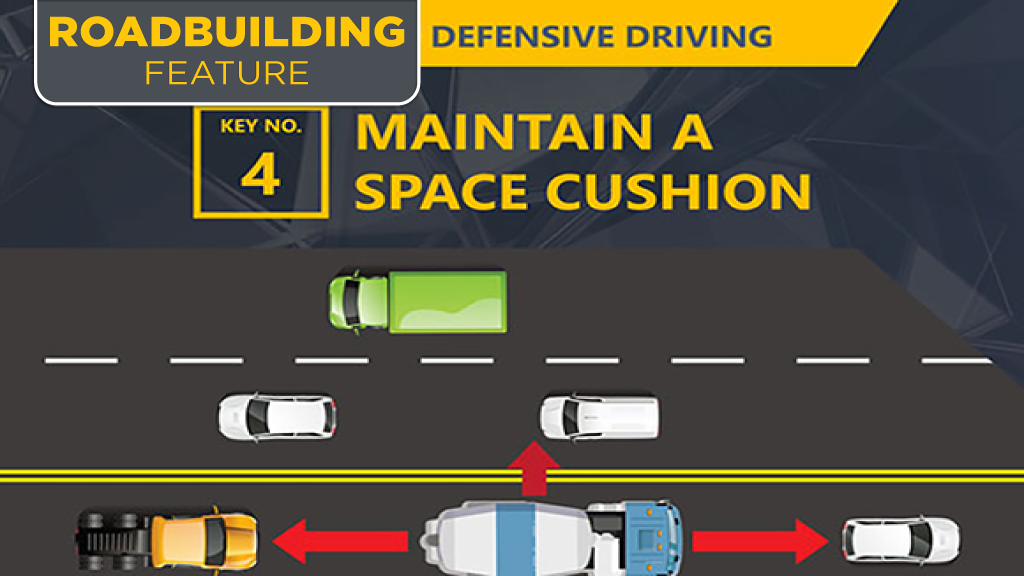As anyone in the construction knows, driving a multi-tonne construction or other heavy delivery truck is totally different from driving a car or a pickup truck.
But that’s not so obvious to other drivers and emphasizing those differences is the theme of a soon-to-be rolled out educational safety campaign aimed at both the construction industry and the general public.
The Blindspot Awareness Program is a collaboration of eight construction associations who shared the $40,000 material development costs, including hiring a consultant.
They include Concrete Ontario, Greater Toronto Sewer & Watermain Contractors Association, Heavy Construction Association of Toronto, Ontario Road Builders Association, Ontario Stone Sand & Gravel Association, Residential and Civil Construction Alliance of Ontario, Residential Construction Council of Ontario, and the Toronto Area Road Builders Association.
Its three main components include a 13-page Defensive Driving Best Practices Guide, safety related artwork those associations can tailor to their own member firms, and three 60-second videos geared to the public, along with artwork that community and safety organizations can use.

While the general public has a good understanding of the blindspots around cars and light trucks, they are less—or even totally—unaware of the visual hindrances large truck drivers have to contend with on a daily basis, says Concrete Ontario president Bart Kanters.
“Trucks are three times the length of a car, can’t weave in out of a traffic on a dime, and many don’t have rearview mirrors.”
Reaching out to the public—which includes light commercial motor and personal vehicle drivers, motorcyclists, cyclists, and pedestrians—to make them aware of the obstructed views large truck drivers are faced with was the catalyst for the program.
Concrete Ontario is the association coordinating the creation and roll-out of the campaign, which is a major enhancement of an original 2016 version it produced. It had two major objectives.
The first of those objectives was the publication of a standardized best practices guide to support its member companies’ own safety training programs, he says.
Creating a poster campaign to support blindspot awareness of large concrete trucks for use in Ontario’s elementary and secondary schools and to support “the amazing work” of various children’s safety villages throughout the province, was the second goal.
“We mailed out more than 5,000 safety posters to both elementary and secondary schools in both the public and Catholic school systems.”
But that earlier program was limited to the Ontario ready mixed concrete industry. The 2022 version, with its eight construction association sponsors, sprouted from a City of Toronto pilot program to increase safety, and reduce conflicts between contractors and residents and business owners in a heavily congested part of the city.
Inspired by similar initiative in Seattle, the Yonge/Eglinton Construction Hub’s purpose is to increase safety and co-ordinate construction activity. The catalyst was the death of a pedestrian who was killed near a construction site in 2019.
The construction industry’s participation in that pilot was the genesis for the creation of the significantly updated version of the blindspot program. Using the material from the original 2016 program as a starting point, a committee comprised of senior executives of the eight associations worked for six months to update and expand the contents from strictly a concrete truck focus to encompass dump and flatbed trucks, says Kanters.
“Those are the major types of equipment that the public interacts with on a daily basis,” he explains.
Employment researcher Jon Callegher of JobTalks was also brought on board to create the new safety awareness posters and to develop the videos.
Targeted towards students and the general public, the videos are divided into three key topics: What are Truck’s Blindspots? How do Pedestrians and Cyclists Pass Trucks Safely? and What are the Challenges associated with Driving Trucks Downtown?
Given the challenges and limitations of COVID-19 over the past 20 months, at this point the campaign has been limited to the creation of a website to host all of the safety material. It includes the videos and the best practices driving guide which can be used by both the construction industry and the public alike, says Kanters. (See www.passtruckssafely.ca)
However, the associations are looking to partner with municipalities, school boards, and safety villages to support “the very significant training efforts” those organizations impart to children.
The offer also includes a willingness to supply commercial motor vehicles for in-person safety demonstrations at elementary schools, he says.
“We are hopeful that these hands-on training programs can begin again this summer.”
As well, a formal presentation on the Blindspot Awareness Program was made to the City of Toronto construction hub team in early February. City officials requested access to all supporting documentation for review by its vision zero team and indicated interest in organizing outdoor safety training events in September, says Kanters.




Recent Comments
comments for this post are closed